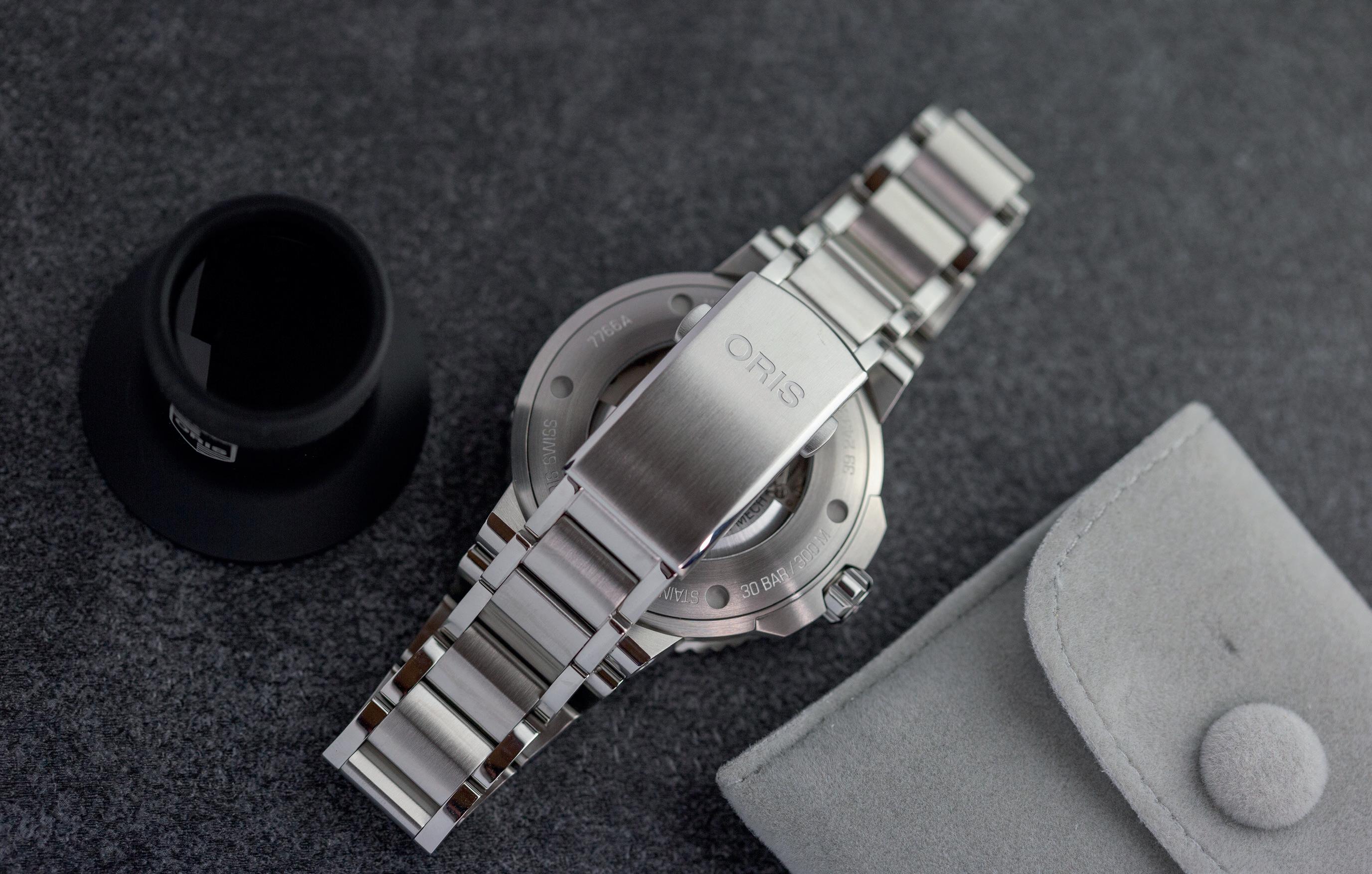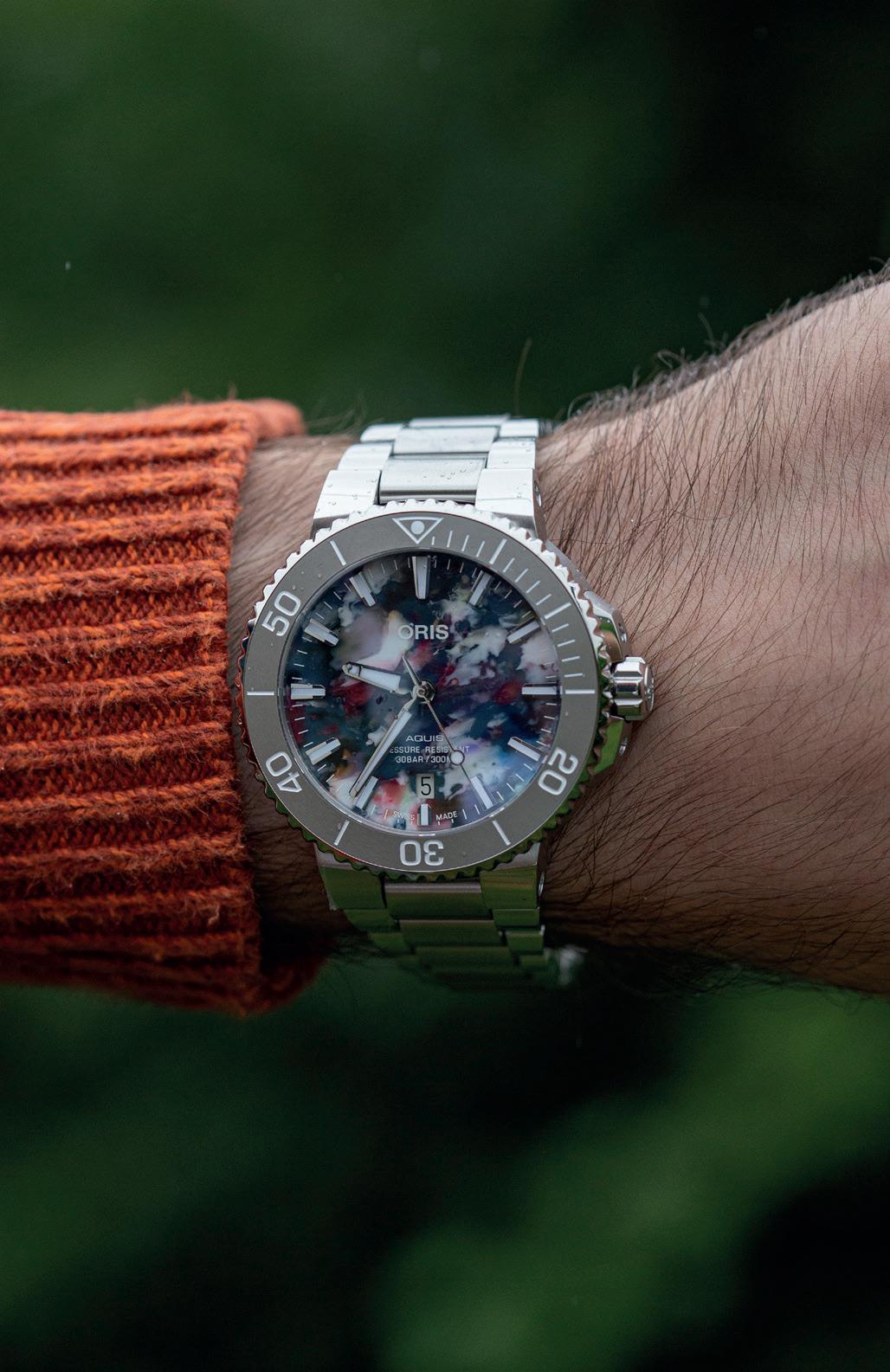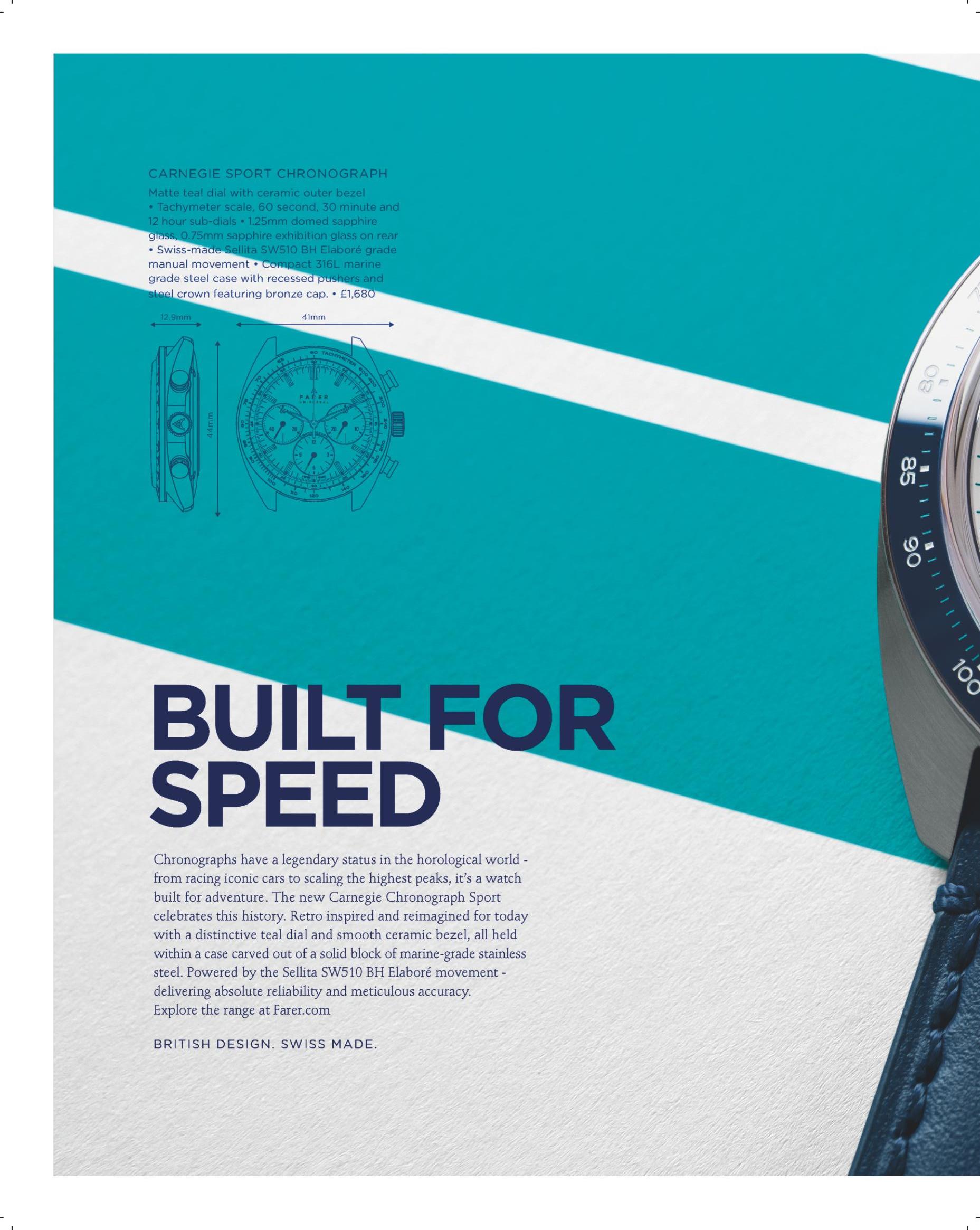
7 minute read
WATCH REVIEWS
THE SPECS
• 40mm stainless steel case with 100m water resistance • Sellita SW220-1 automatic movement with 38-hour power reserve • £549, uk.mondaine.com
HANDS-ON WITH THE MONDAINE
EVO2 AUTOMATIC

Back in 1944, while the rest of the world was blowing itself to ever smaller bits, Swiss engineer Hans Hilfiker had a much different problem: how to make a clear, readable and modern-looking railway clock. Sure, it was less life and death, but by God, the Federal Swiss Railway needed to run on time!
The design he came up with became one of the most iconic Swiss exports of the era. The Official Swiss Railway Clock with its stark black-on-white look and bold, red, lollipop second hand became an international star and put Hilfiker on the map who, fun fact, went on to develop the concept of the fitted kitchen. The clock was his high point.
The point is that the 1944 design is, to this day, instantly recognisable and in no small part thanks to Mondaine. The brand may have been founded a good 40 years after Hilfiker’s masterpiece, but their faithful tracing-paper interpretations of the clock have been at the core of their collection throughout their history.
Honestly though, if you look at their watches over the years, it’s hard to pick out one model from the other. The problem with faithfulness to one design is that you pigeonhole yourself a bit. They made a bit of a break for it with the Helvetica smartwatch, but not enough for it to still be around in any meaningful way.
Instead, they’ve been focusing on the mechanics, upgrading various elements across their collections and generally improving their watches as a whole. Which is perfectly fine by me: why change a formula as winning as the railway clock? The most recent result of those efforts is the Evo2 Automatic.
The Evo2 has been around for a little while now, with its gently-rounded case and magnifying sapphire crystal and maintains Mondaine’s signature Bauhaus minimalism. Previously though, it has always been backed up by a quartz movement. That’s fine for the price tag, but an automatic has been long overdue.
The upgraded movement in question is the workhorse Sellita SW220-1, a perfect fit for a functionalist piece like this. You can see it through the sapphire caseback if you really want to but it’s nothing you won’t have seen before. It’s reliable, accurate and affordable, everything you want from a third-party movement.
Perhaps more importantly, Mondaine have made a few quality-of-life changes to the Evo2. For one, they’ve upped the curvature around the bottom of the case where it curves into the sapphire caseback. It’s not too noticeable from the front, but makes the watch feel a touch smaller than its 40mm and looks lovely in profile, especially with the bright red Mondaine crown.
The lugs too have been given a little more shape, helping the Evo2 sit better on the wrist. It did so well enough before

but now it’s an absolutely gorgeous watch to wear, especially on the mesh bracelet, even if I do prefer the look of the leather, upping the black-and-white contrast.
Among all the various Bauhaus-inspired brands out there – mostly German – Mondaine’s always been the purest. Perhaps the least creative over the years, but faithful all the same and there’s no denying that with the Evo2 Automatic, you’re getting an absolute classic that feels and looks great on the wrist for a price that makes it a no-brainer.
At £549 on the strap, £599 on the bracelet, it doesn’t exactly have an investment price tag, but if the last 77 years are anything to go by, it’s a design as timeless as any Patek.
£549, uk.mondaine.com

THE SPECS

• 41.05mm or 36.5mm stainless steel case with 300m water resistance • Oris 733 calibre automatic movement with 38-hour power reserve • £1,600, oris.ch
HANDS-ON WITH THE ORIS
AQUIS DATE UPCYCLE


The Swiss watchmaker updates their flagship diver with a plastic dial dredged from the depths.
Upcycling is everywhere right now. It’s not too much of a surprise; the planet’s all but on fire at the moment and every little bit helps. But it’s still a surprise to see just how many watchmakers have begun using would-be landfill trash and ocean waste as design elements.
There was Ulysse Nardin with the Diver NET concept watch of course, with both Alpina and Christopher Ward taking similar, plastic-based case materials further. On the other hand, there’s Panerai with their sleek eSteel, using recycled metal this time. Then of course there’s a host of upcycled, vegan or otherwise sustainable straps, a whole sub-genre of wristwear to themselves.
What very few brands do though is upcycled a dial. Enter the Oris Aquis Date Upcycle.
The choice of an Aquis was an obvious one. You want to draw attention to ocean waste, you do so with a diving watch, it’s a central tenet of eco-slanted watches. The ocean waste in question here is PET plastic, the stuff that’s getting into most of the fish we eat at an alarming rate, which forms the new dials.
PET plastic comes from thousands of sources in almost as many colours, as you can clearly see from the swirl of melted-down plastic here. It’s random, abstract and eyecatching in the extreme, enough that it’ll likely put some classicists among you off. I have to say that I’m still not quite used to it myself.
On the flipside, if you don’t like the one we’ve shot here, you might like another one. Because the dials are indeed random, with each individual watch will end up looking remarkably different. Same general aesthetic of course, but with different colours and moods.
It reminds me a lot of the Bamford Watch Department collaboration with Black Badger a while ago where they used multi-layered strata of supercar paint to create unique swirls in a series of TAG Heuers. That was a little more curated of course and less random – they actively looked for the best finishes – but they were also limited. These upcycled Aquis models are not.
On the wrist, the Upcyle is the same as any other Aquis, a solid, comfortable diver available in a decently sized 41.05mm or a diminutive and downright lovely 36.5mm. The smaller one looks a little too much like a jewellery piece, some schizophrenic mother-of-pearl, while the larger one gives the dial space to breath. It’s one of the few times I’d recommend the larger.
While the Upcycle might not be singlehandedly cleaning up the oceans, it does show that there are more inventive ways to use these recycled materials
Either way, the rest of the watch is pared back, with a grey ceramic diving bezel, steel bracelet and signature Aquis crown guard. It’s all very streamlined and equipped with an Oris 733 with a 38-hour power reserve. Oris have made the Upcycle a core part of their collection so hopefully, fingers crossed, we’ll see it with the calibre 400 at some point in the future, too. The more watches that movement goes in, the better.
While the Upcycle might not be single-handedly cleaning up the oceans – Oris would have to make a few hundred thousand more dials a year before it’s a proverbial drop in said oceans – it does show that there are more inventive ways to use these recycled materials.
I’m still not sure how I feel about them myself – the longer I wear it, the more I’m beginning to appreciate the dial’s unique nature. But whether you think they look funky or funkin’ ugly, these dials are a cool idea, done in an interesting way. What more can you ask for?
£1,600, oris.ch













